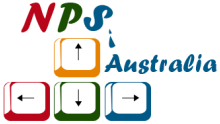The COVID-19 pandemic has highlighted the critical need for robust and efficient vaccination record-keeping systems. Traditional paper-based methods are fraught with issues such as inefficiency, susceptibility to fraud, and interoperability challenges across different regions. This paper explores the potential of integrating blockchain technology, Non-Fungible Tokens (NFTs), and smart contracts to develop a secure, transparent, and universally recognized system for managing pediatric vaccination records. By leveraging the decentralized and immutable nature of blockchain, each vaccination record can be uniquely represented as a tamper-proof digital certificate. Smart contracts are employed to automate various processes within the vaccination system, ensuring data accuracy and integrity. This study presents a theoretical framework and a proof-of-concept implementation, demonstrating the adaptability of the proposed system across multiple EVM-supported blockchain platforms, including Binance Smart Chain, Polygon, Fantom, and Celo. The system aims to enhance the security, integrity, and accessibility of vaccine records, providing a scalable solution for pediatric healthcare.
